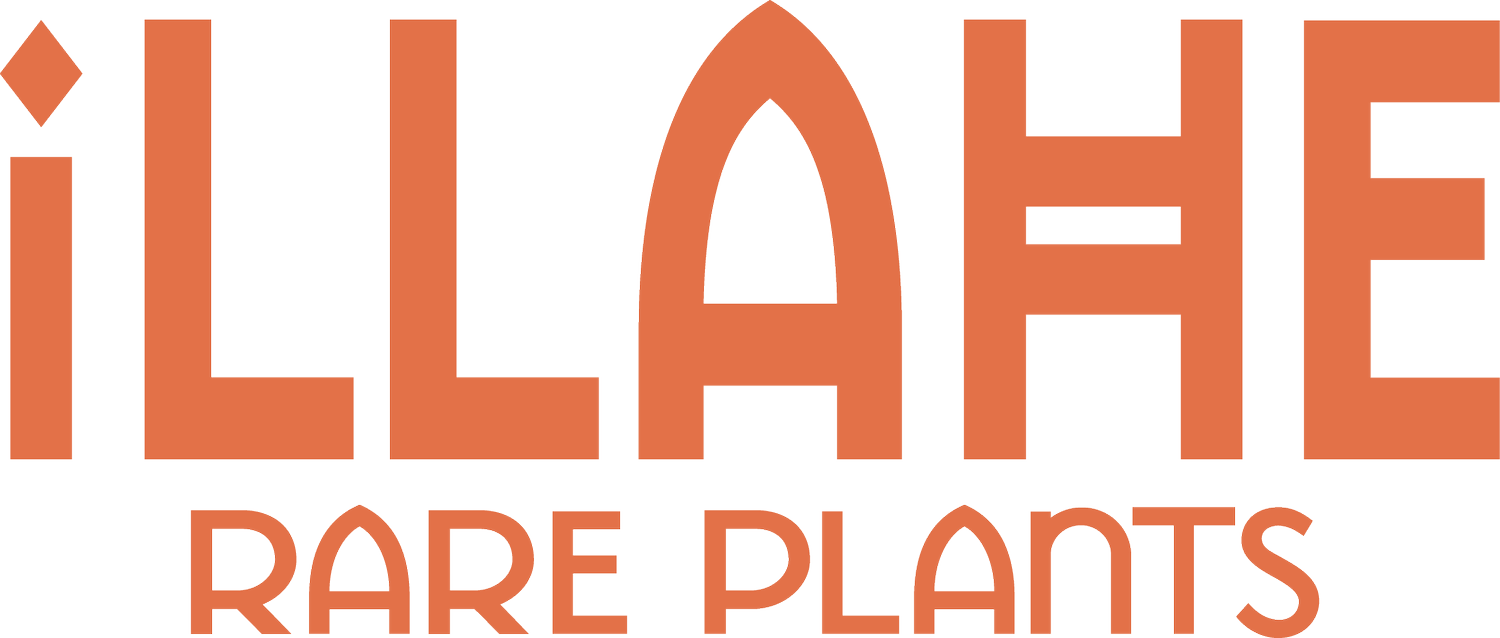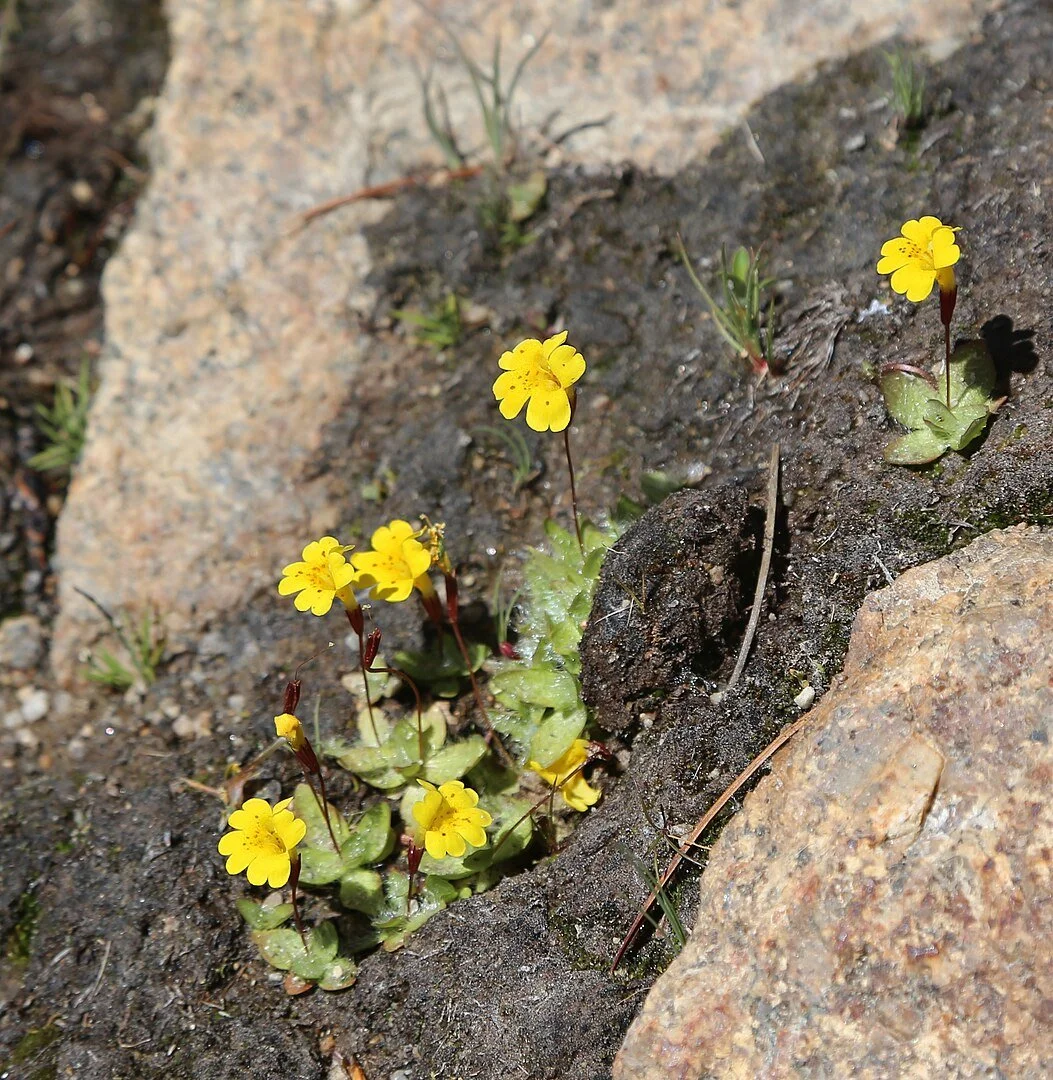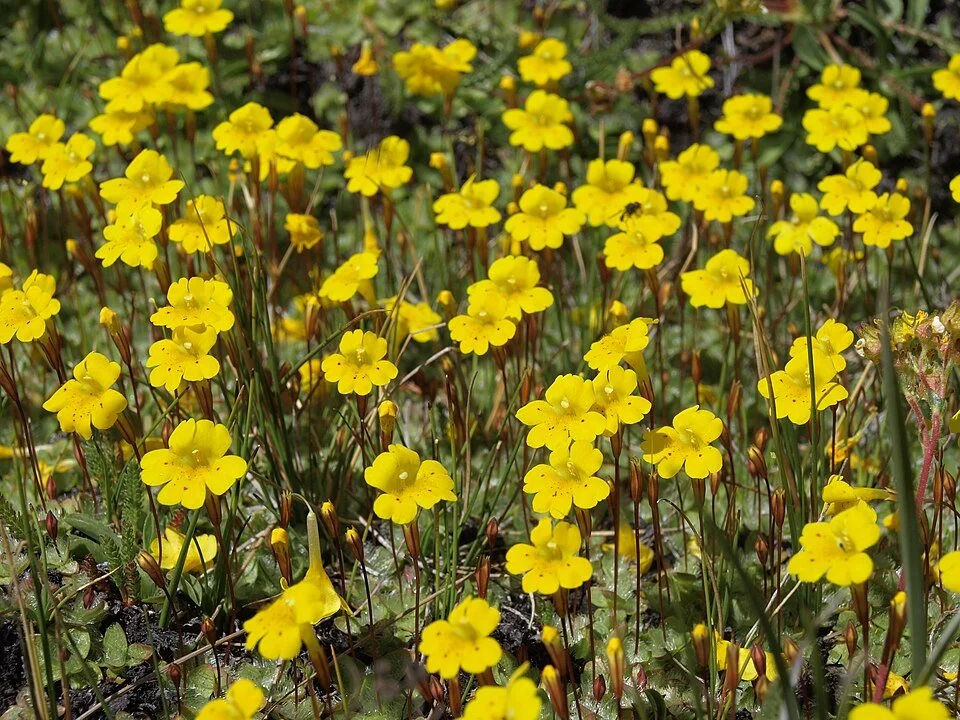



Mimulus cupreus hybrids
Some years ago Jane McGary and I had the most amazing (to me, she had been to Chile I think 4 or 5 times prior) trip from Santiago to the Lakes district of Chile with visits up to the high Andes all along the way. One of the most memorable places for me was the Laguna del Maule, a volcanic field along the Chile/Argentine border with a magnificent lake and loads of interesting plants. Situated around 9,000’-12,000’ feet it’s an amazing place to see rosulate violets, adesmia and rhodophiala growing in volcanic sands. But the outstanding color show is the Monkeyflowers, growing in dry volcanic cinder and sand, it doesn’t look like the mimulus you are used to seeing in flowing water in cold, alpine creeks. Of course we were there in an unusually dry year and I’m sure the snow had laid where the Mimulus were longer, but it looked like a planted garden, the hyrbid swarms of C. luteus and C. cupreus were amazing, every shade from brick red, to copper and brilliant lemon yellow.
So when Holubec made a seed collection and Jane got ahold of a packet I was enthralled to be able to grow these awesome alpine, wildflowers. Mixed colors, the first to pics are from the Holubec collection seed and the last two pics are my photo’s of the plants in habitat at Laguna del Maule.
As with any monkeyflower, you want to take cuttings (which root easily) or save seed and start them frequently, like our beloved four legged fido friends, they are not long lived by Galopogas tortoise standards, but they can be renewed and started again and this strain I’m super excited to have and to be able to offer. Perfect for edging the bog garden, or in a moist spot in the rock garden, these will always appreciate a bit more moisture than most, but they are as true an alpine as you can imagine.
Some years ago Jane McGary and I had the most amazing (to me, she had been to Chile I think 4 or 5 times prior) trip from Santiago to the Lakes district of Chile with visits up to the high Andes all along the way. One of the most memorable places for me was the Laguna del Maule, a volcanic field along the Chile/Argentine border with a magnificent lake and loads of interesting plants. Situated around 9,000’-12,000’ feet it’s an amazing place to see rosulate violets, adesmia and rhodophiala growing in volcanic sands. But the outstanding color show is the Monkeyflowers, growing in dry volcanic cinder and sand, it doesn’t look like the mimulus you are used to seeing in flowing water in cold, alpine creeks. Of course we were there in an unusually dry year and I’m sure the snow had laid where the Mimulus were longer, but it looked like a planted garden, the hyrbid swarms of C. luteus and C. cupreus were amazing, every shade from brick red, to copper and brilliant lemon yellow.
So when Holubec made a seed collection and Jane got ahold of a packet I was enthralled to be able to grow these awesome alpine, wildflowers. Mixed colors, the first to pics are from the Holubec collection seed and the last two pics are my photo’s of the plants in habitat at Laguna del Maule.
As with any monkeyflower, you want to take cuttings (which root easily) or save seed and start them frequently, like our beloved four legged fido friends, they are not long lived by Galopogas tortoise standards, but they can be renewed and started again and this strain I’m super excited to have and to be able to offer. Perfect for edging the bog garden, or in a moist spot in the rock garden, these will always appreciate a bit more moisture than most, but they are as true an alpine as you can imagine.








